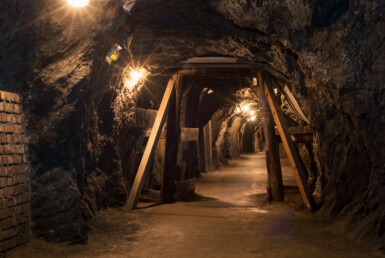
OTTIENI UNA VALUTAZIONE GRATUITA IN 24 ORE CLICK HERE X Dismiss
110+
Global lower-middle market M&A Advisors
21+
Countries in which we've closed transactions
13+
Languages spoken by our Team
$20B+
Total deals value
110+
Global lower-middle market M&A Advisors
21+
Countries in which we've closed transactions
13+
Languages spoken by our Team
$20B+
Total deals value
© 2026 MergersCorp M&A International.
© 2025 MergersCorp M&A International is a global brand operating through a number of professional firms and constituent entities (“Members”) located throughout the world to provide Investment Banking, Corporate Finance, and Advisory Services and other client-related professional services. The Member Firms (“Members”) are constituted and regulated in accordance with relevant local regulatory and legal requirements. For more details on the nature of our affiliation, please visit our Disclaimer: https://mergerscorp.com/disclaimer. MergersCorp M&A International's franchising program is not offered to individuals or entities located in the United States.
The franchising program is offered by MergersUK Limited, a UK Company with its registered office at 71-75 Shelton Street, Covent Garden, London, WC2H 9JQ, United Kingdom.
MergersCorp M&A International provides strategic business advisory services, including preparing companies for growth and capital access. Through partnerships with licensed investment bankers, clients can access tailored capital-raising solutions.
U.S. Investment Banking Securities transactions are exclusively conducted by Spektrum Capital Advisors LLC, a Registered Representative of, and Securities Products offered through, BA Securities, LLC, a FINRA-registered broker-dealer. Check the background of investment professionals associated with this site on Broker Check.
Austria is a very mining-friendly country. The Austrian governments plan for mineral resources even served as a blueprint for a notice of the EU to its member states: “In the EU the regulatory framework has to be structured in s ...
Murtal For Sale
Murtal Businesses for Sale, Find the Best Established Murtal Businesses for Sale, Murtal Businesses for Sale Marketplace, Buy a Murtal Business in, Murtal Companies for Sale, Discover opportunities for entrepreneurs in the United States, Murtal Companies for sale. Browse the Best Murtal Businesses for Sale Available to Buy Now, Murtal Business for Sale, Explore Murtal Business for Sale, Murtal Business for Sale, Murtal Business Opportunities.
Austria is a very mining-friendly country. The Austrian governments plan for mineral resources even served as a blueprint for a notice of the EU to its member states: “In the EU the regulatory framework has to be structured in such a way as to encourage a supply with mineral resources from European sources.”
The Styrian Alps once had been famous for their abundance in gold and silver occurences.
Our gold project is situated in the mineral-rich district of Styria, about 120 km to the south-east of Salzburg and about 85 km to the north-west of Graz. It covers the south-eastern slopes of the Woelzer Tauern, west of the large Poelstal fault zone and comprises 48 granted claims in the gold bearing ore zone near the village of Pusterwald. This area has a well known history of mining – mainly for gold, silver, copper and lead – as far back as to the early Middle Ages. Historical artifacts even date back to the Bronze Age, to the Illyrians, the Celts and the Romans.
Nowadays the exploration of ancient mining areas with modern methods is common practice worldwide in discovering as yet unknown mineralization/ore bodies.
Key facts
- 48 granted claims near the village of Pusterwald comprising a total area of about 20 km²
- Mining activities documented since 1588, but probable since Celtic and Roman times
- 14 historical high-grade occurrences of gold are known at surface
- Problems with dewatering impacted on mining activities in historical times
- Numerous historical gold mines are found within the licence area
- Gold grades of up to 59 g/t with an average of 17.7 g/t have been published in the mining literature on the area ‘Plettenkar’ in the year 1952
- All mining experts agree on the abundant occurrence of ore in the ‘gold-area’ Pusterwald
- Recently taken surface samples from the Plettenkar, yielded 9.45; 9.93; 10.9; 14.15; 14.45; 16.85; 23.4; 29.2; 37; 41.1 and as top value 85.2 g/t gold (ALS/OMAC Laboratory)
- Many strong geophysical anomalies, using Magnetic, VLF, RMT, IP, SP methods, have recently been discovered
- Good contacts with the local authorities and landowners
- Resuming mining activities is welcomed in the region
Planning further exploration
A large exploration programme is planned in many interesting parts of the project area, at first focussing on the Plettenkar-area:
- Systemically collecting surface samples for laboratory analysis
- Additional geophysics in order to analyse the geological structure
- Selecting locations for diamond core drilling
- First estimate of the size of the ore bodies
The results of many shallow drill holes in connection with the results of geophysical exploration and geochemical analyses will allow planning for deeper drilling.
Products
The following precious metals or raw materials are contained in or together with the respective ores of the project area and could be mined after completing an economic feasibility study as by-products in addition to the “green” marked main product, which drastically reduces the future mining expenditures and of course the development costs:
Pusterwald: Au, Ag, Sb, Cu
The new table of critical raw materials for the EU of September 29, 2017 now contains 27 critical raw materials (after 14 critical raw materials in 2011 and 20 critical raw materials in 2014):
Antimony, Barite*, Beryllium, Bismuth*, Borate, Cobalt, Coking coal, Fluorite, Gallium, Germanium, Hafnium*, Helium*, Indium, Magnesium, natural Graphite, natural Rubber, Niob, Rock Phosphate, Phosphorus*, Scandium*, metallic Silicium, Tantalum*, Tungsten, Vanadium*, Platinum Group Metals, Heavy Rare Earths, Light Rare Earths.
(The raw materials underlinded and marked with * are new in the list as compared to 2014.)
Antimony (Sb) is defined by the EU as a “critical raw material” and therefore especially in demand, since there is hardly any occur within the area of the EU. There are subsidies available in the EU of several hundred millions Euro for the detection of such raw materials in connection with the development of innovative exploration methods.
About
Resources
Contacts
M&A Deal Advisory
Corporate Finance
- Strategic advisory
- SPAC Advisory Service
- Financing and IPOs
- Due Diligence
- Corporate Administration
- Corporate Restructuring
- Debt Restructuring
- Equity Restructuring
- Bridge Financing
- International finance consulting
- Project finance consulting
- Bonds / Actively Managed Certificates (AMCs)
- Succession Planning
- M&A Sports & Football
Consulting
© 2025 MergersCorp M&A International is a global brand operating through a number of professional firms and constituent entities (“Members”) located throughout the world to provide Investment Banking, Corporate Finance, and Advisory Services and other client-related professional services. The Member Firms (“Members”) are constituted and regulated in accordance with relevant local regulatory and legal requirements. For more details on the nature of our affiliation, please visit our Disclaimer: https://mergerscorp.com/disclaimer. MergersCorp M&A International's franchising program is not offered to individuals or entities located in the United States.
The franchising program is offered by MergersUK Limited, a UK Company with its registered office at 71-75 Shelton Street, Covent Garden, London, WC2H 9JQ, United Kingdom.
MergersCorp M&A International provides strategic business advisory services, including preparing companies for growth and capital access. Through partnerships with licensed investment bankers, clients can access tailored capital-raising solutions.
U.S. Investment Banking Securities transactions are exclusively conducted by Spektrum Capital Advisors LLC, a Registered Representative of, and Securities Products offered through, BA Securities, LLC, a FINRA-registered broker-dealer. Check the background of investment professionals associated with this site on Broker Check.
This website is operated by MergersUS Inc a US Corporation with registered office at



















